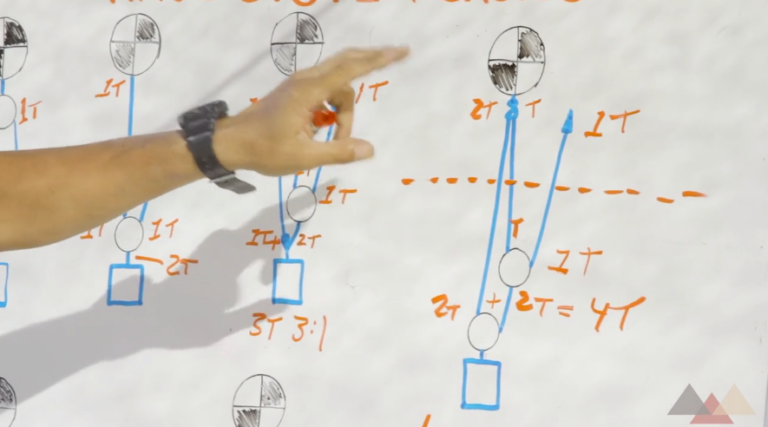Analyzing Rope Rescue Systems: Critical Points and Safety Considerations
Rope rescue systems are essential tools for emergency services, designed to safely transport loads or injured individuals from hazardous situations. To ensure these systems operate safely and effectively, rigorous analysis is necessary to identify and address potential weaknesses. This article delves into the key components of rope rescue system analysis: critical point evaluation, whiteboard analysis, and the whistle test.
The Importance of System Analysis
Failures in rope rescue systems can result in catastrophic consequences:
- Load Release Failures: When a component fails and releases the load, the damage can be devastating to both the system and those relying on it.
- Non-Release Failures: When the system stops functioning under tension, delays in resolving the issue can jeopardize patient safety.
By evaluating the entire system and not just individual components, rescuers can preemptively address weak links, ensuring reliable performance in real-world conditions.

Example 1 of a Simple System 1:1
|

Example 2 of a Simple System 1:1
|
Key Methods for Rope Rescue System Analysis
1. Critical Point Analysis
Critical point analysis evaluates the entire system to identify components that could cause catastrophic failure if compromised.
Key Considerations:
- Identify any components that lack redundancy or backup.
- Assess the potential failure of secondary systems, such as belays.
- Address weak links with redundant components or alternative solutions.
Example:
If a belay system relies on a single carabiner, a backup should be added to mitigate risks in case of failure.
| Example 1 10.5:1 | Example 2 15:1 |
|
|
2. Whiteboard Analysis
Whiteboard analysis provides a detailed, visual overview of the rescue system, assessing static and dynamic loads to ensure the system’s strength and safety.
Steps for Whiteboard Analysis:
- Identify Components: List all elements, including anchors, pulleys, ropes, and carabiners.
- Assess Strength: Determine the minimum breaking strength (MBS) of each component.
- Analyze Forces: Evaluate changes in force due to angles, pulleys, or load multipliers.
- Determine System Safety Factor (SSF): Calculate the ratio between the system’s strength and the expected load to ensure safety.
Practical Tips:
- Incorporate fixed points like tie-off anchors to improve predictability.
- Use SOPs for consistent anchor setups, such as ensuring interior angles remain under 90°.
Example:
In a system with a 2 kN load, a knotted 30 kN rope reduces strength by 25%, making it a potential weak link. Upgrading carabiners or pulleys can improve the SSF, but the rope must still be addressed to ensure overall safety.

First Example SSSF of 7.5:1
|

Second Example SSSF of 10:1
|
3. The Whistle Test
The whistle test evaluates the system’s safety under theoretical conditions where all operators simultaneously lose control, such as due to a sudden distraction.
Key Considerations:
- Systems like tandem prusiks should pass the whistle test, ensuring the load is arrested even if operators let go.
- Systems relying on manual intervention, such as a munter belay, typically fail this test and should be avoided for critical operations.
|
|
Advanced Examples of System Analysis
Scenario 1: Initial System with SSSF 7.5:1
- Setup:
- Fixed pulley rated at 36 kN (NFPA G).
- Carabiner rated at 30 kN (T-use).
- 90° interior angle at the change of direction (COD), multiplying the load by 1.41.
- Result: The carabiner is the weak link, reducing the system’s SSSF.
Scenario 2: Adjusted System with SSSF 10:1
- Improvements:
- Replaced the 30 kN carabiner with a 40 kN G-rated carabiner.
- Upgraded the pulley to a 40 kN rating.
- Outcome: The weakest link shifts to the pulley, improving the overall SSSF to 10:1.
Ensuring System Safety
To maintain a safe and efficient rope rescue system:
- Evaluate Components: Regularly assess MBS and identify weak links.
- Adopt SOPs: Use standardized procedures to ensure consistency in setups.
- Train Thoroughly: Ensure all team members are familiar with system analysis techniques and can address potential failures proactively.
- Upgrade Weak Links: Replace or reinforce components that compromise the system’s SSF.
Conclusion
Rope rescue system analysis is essential to ensure the safety and success of operations. By employing methods like critical point analysis, whiteboard evaluations, and the whistle test, rescue teams can identify and address potential vulnerabilities, minimizing risks and maximizing efficiency.
Rope Rescue Analysis article:
- Critical Point Analysis in Rope Rescue Systems
- Understanding System Safety Factors (SSF)
- Whiteboard Techniques for Rescue System Planning
- Rope Rescue Equipment and System Essentials
- The Whistle Test in Rescue Systems
Peace on your days,
Lance










